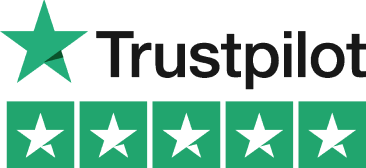Let’s Break This Down Together...
Making Tax Digital can feel confusing, especially when choosing the right software. You might be wondering if Sage is still the best option.
This article looks at how Sage fits into the MTD world, from its features to how it compares with other providers. It also explains how to decide if it’s right for your needs.
You’ll walk away with a clearer view of Sage, MTD rules, and how to stay compliant without the stress. Let’s dive in.
What exactly is Sage Making Tax Digital?
Sage Making Tax Digital is a cloud-based solution that helps businesses meet HMRC’s digital tax requirements. Businesses and landlords are among the primary users required to comply with MTD for Income Tax, and Sage supports their needs for digital for income tax compliance. It works with your existing Sage accounting software, creating a seamless experience.
The software lets you keep digital records and submit tax information directly to HMRC, supporting the move to tax digital for income. Sage is income tax compatible and software compatible with HMRC’s requirements, ensuring your submissions meet the latest standards.
This eliminates manual entry on the government gateway, saving time and reducing errors. Sage’s MTD solution has also undergone a testing phase to ensure full compatibility with HMRC systems. For VAT-registered businesses, using MTD-compatible software like Sage is now mandatory. The system creates digital links between your records and HMRC, maintaining a clear audit trail.
To comply with MTD for Income Tax, you must use software that is compatible with HMRC’s digital requirements. Sage offers MTD solutions for various products including Sage 50cloud and Sage Business Cloud Accounting.
Users should check with their software provider to ensure their solution is fully compliant. This makes compliance accessible regardless of which Sage product you use, and reinforces the importance of digital for income tax compliance.
Income Tax and Digitalization: Beyond VAT
The rollout of Making Tax Digital (MTD) for Income Tax is set to transform the UK tax system even further, building on the foundation laid by MTD for VAT. From April 2026, sole traders and landlords with income above £50,000 will be required to use compatible software to manage their income tax affairs digitally.
This move is designed to streamline tax accounting, reduce errors, and make the process of reporting income tax more efficient for both taxpayers and HMRC. The scope of MTD for Income Tax covers a wide range of income sources, including self-employment and property rental income. As the initiative expands, the income threshold will lower to £30,000 in April 2027 and then to £20,000 in April 2028, bringing more sole traders and landlords into the digital tax system.
By embracing making tax digital mtd, businesses and individuals can expect a more accurate and less stressful experience when it comes to managing their tax digital obligations.
Understanding these new requirements is essential for anyone affected, especially as the rules for income tax will apply to more people over the coming years. Accountants and their clients should start preparing now to ensure a smooth transition and ongoing compliance with the evolving scope of mtd.
How Sage MTD works with VAT returns
All VAT-registered businesses must now submit returns using MTD-compatible software. Sage formats your data exactly how HMRC needs it, making compliance straightforward. The software calculates your VAT automatically based on your transactions. Before submission, it runs validation checks to catch potential errors, preventing HMRC queries later.
You'll receive clear submission history and confirmation receipts for every return. This provides peace of mind that your VAT obligations are being met correctly. Sage MTD supports both standard quarterly and monthly VAT filing schedules. It adapts to whatever arrangement you have with HMRC, offering flexibility.

Digital Records and Your Accounting Period
With MTD for Income Tax, keeping digital records is no longer optional, it’s a requirement. Taxpayers must use accounting software, such as Sage 50 Accounts or Sage Business Cloud Accounting, to record all business income and expenses digitally. This not only helps with accurate record keeping but also ensures that your data is ready for submission to HMRC at any time.
Your accounting period for MTD will align with the tax year, running from 6 April to 5 April. If you have more than one business, you may have multiple digital start dates, but aligning your accounting periods can simplify compliance. Accountants can play a key role in helping clients coordinate these dates and ensure all digital records are up to date.
The move to digital records means that instead of submitting a single Self Assessment tax return at the end of the year, you’ll provide quarterly updates to HMRC. At the end of the tax year, you’ll submit a final declaration, replacing the traditional SA100 tax return, which summarizes your income, expenses, and any other relevant information needed to calculate your final tax bill. This new approach aims to make tax returns more manageable and less prone to last-minute surprises.
Quarterly Updates and Submissions Explained
A major change under MTD for Income Tax is the introduction of quarterly updates. Every three months, you’ll need to submit a summary of your business income and expenses to HMRC using compatible software. These quarterly updates give both you and HMRC a real-time view of your tax position, helping you stay on top of your obligations and avoid unexpected tax bills.
Compatible software options, such as those listed on the HMRC website, including Sage, Coconut, and Absolute Excel Income Tax Filer, make it easy to prepare and submit these updates. At the end of the tax year, you’ll complete a final declaration, which replaces the traditional Self Assessment tax return. This final step involves confirming your total income and expenses for the year, along with any other details needed to finalize your tax bill.
The deadline for submitting your final declaration is 31 January following the end of the tax year, giving you time to review your figures and ensure everything is accurate. By breaking the process into quarterly updates and a final declaration, MTD for Income Tax aims to make tax reporting more manageable and transparent for everyone involved.
Setting up Sage for MTD is easier than you think
Getting started with Sage MTD involves connecting your software to HMRC via a secure API connection. This creates a direct digital pathway for your tax information.
You’ll need to authenticate your business credentials with HMRC through the software. Sage guides you through this process with clear, step-by-step instructions. It’s important to know your MTD 'start date', as this determines when you must begin keeping digital records and ensures you are compliant from the correct point.
Setting up automated reminders for tax period deadlines helps you stay on track. No more last-minute rushes or late-night panic sessions before filing deadlines.
Before your first real submission, Sage lets you test the process thoroughly. This means you can resolve any issues before they become problems at critical filing times.

Brilliant features that make tax less taxing
Sage’s MTD software calculates your VAT in real-time as you enter transactions. This gives you an up-to-date view of your tax position throughout the quarter.
Sage can handle income from UK property and foreign property, making it suitable for landlords and property investors. It also supports the submission and management of assessment tax returns and self assessment tax returns within the MTD framework.
Every submission creates a digital audit trail, making it easy to track what you’ve submitted. If HMRC has questions, you’ll have comprehensive answers ready.
The automated VAT return generation takes figures directly from your accounting records. This maintains the digital links required by MTD regulations without manual intervention.
For businesses using older Sage versions, bridging software options are available. You can comply with MTD without upgrading your entire accounting system.
HMRC Requirements: Staying Compliant
To stay compliant with MTD for Income Tax, it’s essential to use compatible software that meets HMRC’s digital requirements. Your chosen software must be able to create, store, and update digital records for all self-employment and property income and expenses. It should also support the submission of quarterly updates and the final declaration directly to HMRC.
There are a variety of software providers to choose from, including Sage, QuickBooks, and Xero, as well as a free version from HMRC for those with straightforward tax affairs. Regardless of your choice, it’s crucial to ensure your software is fully compatible and up to date with the latest MTD requirements.
Maintaining accurate and complete digital records, submitting quarterly updates on time, and filing your final declaration are all key responsibilities under the new system. Non-compliance can result in penalties, so it’s wise to consult with your accountant or tax advisor to make sure you’re meeting all your obligations and making the most of the digital tax system.
Taxpayer Responsibilities Under MTD
As MTD for Income Tax becomes the new standard, taxpayers need to be proactive in meeting their responsibilities. This includes maintaining accurate digital records of all business and rental income, submitting quarterly updates, and filing a final declaration at the end of the tax year. Using accounting software like Sage 50 Accounts or other compatible solutions is essential for managing these tasks efficiently.
Digital records must be kept for at least six years, ensuring you’re prepared in case HMRC requests an audit or further information. If you’re self employed or receive rental income, make sure your software can handle these income types and is approved for MTD for income tax submissions.
Staying on top of your obligations not only helps you avoid penalties but also makes the transition to the new digital tax system much smoother. If you’re unsure about any aspect of MTD for Income Tax, don’t hesitate to seek advice from your accountant or tax advisor—they can help you navigate the changes and keep your tax affairs in order.

Important MTD deadlines to keep on your radar
VAT-registered businesses are already required to use MTD-compatible software for their returns. If you’re not set up yet, immediate action is necessary.
A key deadline to note is 27 March 2025, which marks an important date for implementing MTD for Income Tax. For Income Tax Self Assessment, income tax rules determine when businesses and landlords must adopt digital record-keeping and submit tax returns under MTD.
These rules change in April 2026 for businesses with income over £50,000. Those with income over £30,000 follow in April 2027. The earliest digital start date for businesses and landlords required to comply with MTD for Income Tax is 6 April 2026.
Corporation Tax MTD requirements are still being developed by HMRC. Sage regularly updates their software to keep pace with evolving regulations, with June 2025 being an important milestone for software updates and reporting requirements related to MTD.
Each new phase of MTD brings changes to Sage software functionality. Staying current with updates ensures you remain compliant as requirements evolve.
Solving common Sage MTD hiccups
Authentication errors often happen when connecting to HMRC. Usually, this is fixed by checking your Government Gateway ID and password are correct.
If a submission fails, Sage provides clear error messages explaining what went wrong. Most issues can be resolved by correcting the identified problem and resubmitting.
Digital link requirements mean your data must flow without manual intervention. Sage helps maintain these links between spreadsheets and your accounting software.
I once spent an entire weekend manually reconciling VAT figures before MTD. Now with Sage, what took days takes minutes, with far fewer headaches and much more accuracy.
When you need help, Sage offers dedicated MTD support channels. Their specialists understand both the software and HMRC's requirements thoroughly.
Final Thoughts
Making Tax Digital represents a significant shift in UK tax administration. While initially daunting, Sage's MTD solutions make compliance straightforward and manageable.
With proper setup and training, digital tax actually reduces your admin burden. The automation and validation features catch errors before they become costly problems.
As HMRC continues to expand the MTD initiative, having compatible software puts you ahead of the curve. You'll be well-positioned for future regulatory changes.




